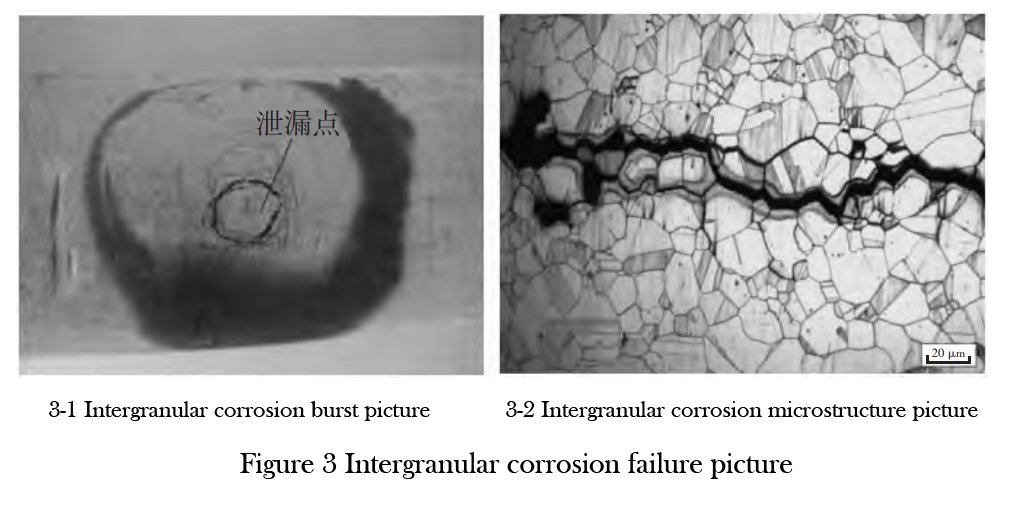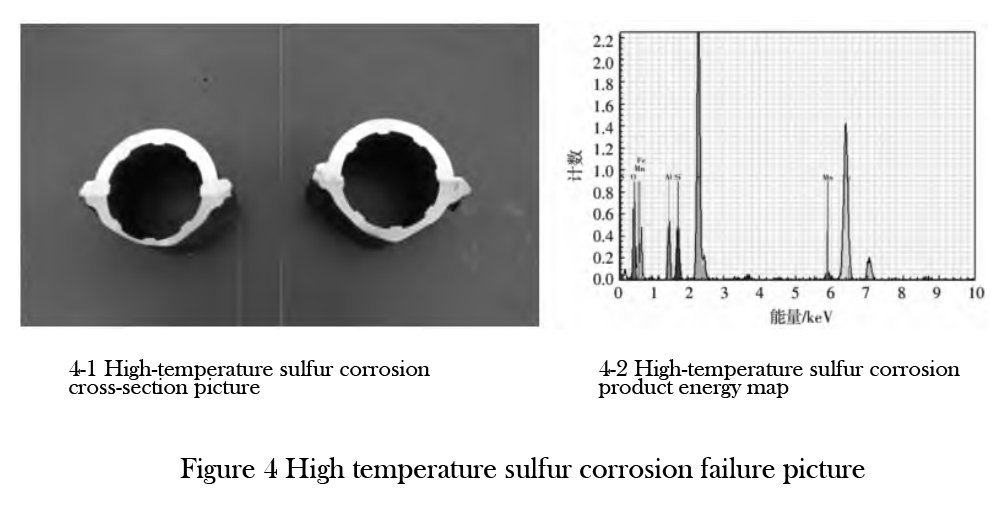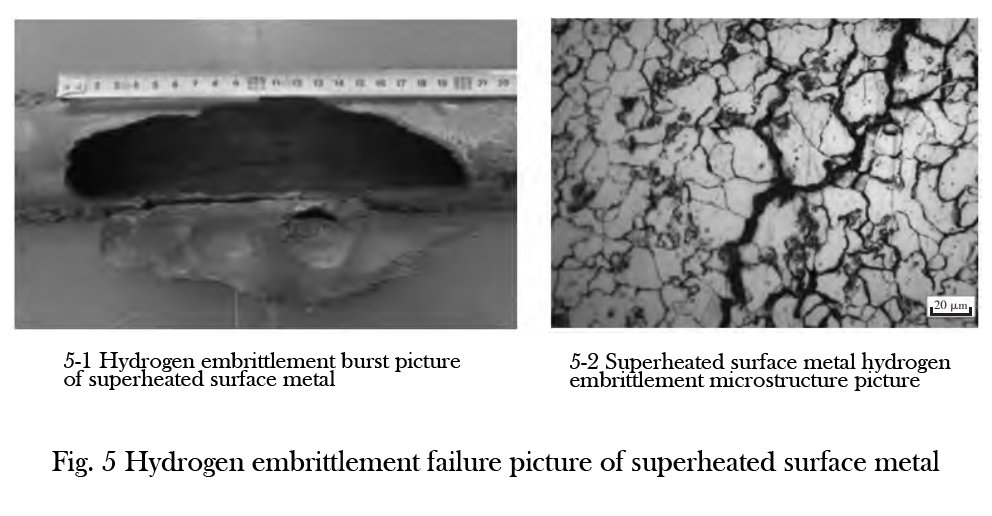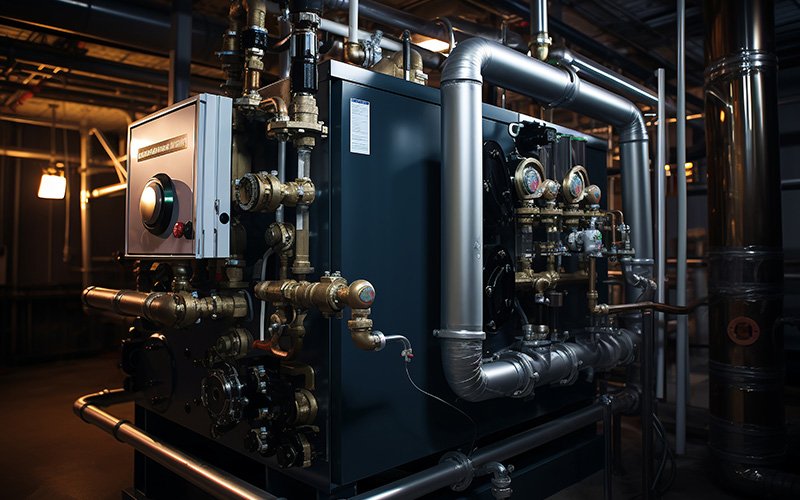The boiler serves as the central component within a power plant’s infrastructure, playing a pivotal role in ensuring the operational safety of the entire facility. The stability and dependability of the boiler directly dictate the overall security of power plant operations. The heating surfaces of the boiler encompass four primary segments: the economizer, water-cooled wall, superheater, and reheater. An in-depth analysis of operational anomalies in boiler functionality reveals that issues pertaining to the boiler’s heating surfaces contribute to over 70% of the comprehensive boiler malfunctions. This phenomenon has evolved into a pivotal determinant influencing the routine functionality of the boiler.
Drawing insights from a thorough investigation into instances of boiler heating surface failures, this research article elucidates diverse categories of power plant boiler heating surface malfunctions, encompassing their respective failure cases, underlying causative factors, and recommended remedial actions. Through this comprehensive evaluation, the study delineates the distinctive attributes and root origins of various forms of failure, thereby establishing a fundamental framework for the efficacious enhancement of boiler stability and reliability.
Analysis of Boiler Heating Surface Failure Modes and Remedial Measures
To comprehensively investigate the failure modes of boiler heating surfaces and implement effective preventive strategies, the project team has diligently compiled and analyzed boiler superheating surface failure cases over the past two years. This meticulous analysis has identified several primary failure modes within the boiler heating surface, including short-duration superheating, sustained superheating, inter-crystalline corrosion, hydrogen embrittlement, high-temperature sulfur corrosion, and inherent surface defects. Each mode has been meticulously examined to unveil its underlying causes and manifestations.
1.1 Short-Duration Superheating of Boiler Superheating Surface
The occurrence of short-duration superheating in the boiler superheating surface arises from transient abnormalities during the operation, resulting in rapid temperature elevation within a brief timeframe. This sudden temperature rise compromises the structural integrity of the boiler wall material. In escalated situations, elevated internal pressure may lead to plastic deformation, causing tube diameter expansion and even catastrophic wall rupture and material leakage. Notably, this type of superheating exceeds the lower critical temperature point, and in severe instances, it can approach or surpass the upper critical temperature threshold.

Short-duration superheating most commonly manifests at the fire side of the water-cooled wall or the elbow section of the boiler reheater. Figure 1 illustrates the causes and damage patterns associated with short-duration overheating of the boiler heating surface. To address this issue, the proposed enhancement measures primarily focus on two key areas:
- Implement dynamic monitoring of boiler wall temperatures, promptly adjusting the cooling system to counteract overheating and prevent escalating temperature spikes.
- Conduct thorough inspections of the elbow section prior to boiler start-up, ensuring the absence of foreign substances, water, or oxide skin deposits.
1.2 Long-Term Overheating of Boiler Superheating Surface
Long-term overheating of the boiler superheating surface pertains to extended periods during which wall temperatures persistently exceed the critical threshold, even if they do not breach operational limits. Such prolonged over-temperature operation induces material aging, mechanical property degradation, and eventual creep deformation and tube wall rupture, particularly in the high-temperature section of the superheater. Refer to Figure 2 for a depiction of the damage structure associated with long-term overheating.

In response to the causes and damage forms stemming from long-term overheating of the boiler heating surface, the recommended improvement program encompasses the following aspects:
- Continuously monitor boiler wall temperatures, promptly adjusting the cooling system to mitigate protracted abnormal temperature conditions.
- Elevate water quality treatment procedures, refraining from employing high-hardness water to prevent internal scaling and consequent heat dissipation impairment.
- Replace piping materials in areas susceptible to exceeding temperature standards with high-temperature-resistant alternatives.
- Optimize combustion parameters to minimize thermal deviations, ensuring uniform and stable medium flow within the boiler and preventing temperature exceedances due to uneven heating.
By diligently addressing and rectifying these identified failure modes and implementing the prescribed enhancement measures, power plant operators can bolster the stability, longevity, and reliability of their boilers, thereby safeguarding the smooth and secure operation of the entire facility.
1.3 Intergranular Corrosion of Superheated Surface
Intergranular corrosion occurring on the superheated surface primarily involves the prolonged exposure of Boiler Heating Surface steel to sensitization temperatures during heat processing and treatment. Within this range, the high-temperature interaction between carbon and chromium elements gives rise to crystalline substance formation, leading to localized chromium depletion and diminishing the corrosion resistance of the Boiler Heating Surface. The continuous corrosion action, compounded by pressure and operational stresses, can culminate in ruptures on the heated surface. This mode of corrosion poses a significant threat, rapidly compromising material strength within the affected region, rendering it the most alarming form of corrosion affecting the boiler Heating Surface. Instances of intergranular corrosion predominantly manifest near welds or in proximity to hot bending positions within the boiler structure, as depicted in Figure 3.

In light of the underlying causes and resultant damage patterns stemming from intergranular corrosion on the boiler Heating Surface, a comprehensive improvement strategy can be delineated across four key dimensions:
- Enhance Structural Strength: Incorporate titanium into the steel composition to bolster material structural integrity, thereby deterring the formation of chromium-depleted zones during the hot working process.
- Immediate Solution Treatment: Following hot working procedures, promptly subject the material to solution treatment. This process facilitates the dissolution of carbides formed during high-temperature work, fostering their retention within the steel matrix and elevating overall corrosion resistance.
- Optimize Welding Practices: Employ a welding approach characterized by low heat input and progressive welding structure. This strategy augments weld cooling rates, reducing the duration of high-temperature exposure within the weld zone.
- Pre-Weld Annealing: Conduct a pre-weld annealing of the metal to alleviate stress concentration and mitigate the likelihood of intergranular corrosion onset.
By judiciously addressing these facets and executing the proposed enhancements, power plant operators can effectively curtail the menace of intergranular corrosion on the boiler Heating Surface. This concerted effort not only preserves the integrity of the heating elements but also ensures the sustained and secure operation of the entire boiler system.
1.4 High-Temperature Sulfur Corrosion of Superheated Surface
The phenomenon of high-temperature sulfur corrosion on the superheated surface pertains to the development of sulfide compounds on the boiler Heating Surface, induced by the interaction of elevated temperatures with sulfur-containing mediums. This ongoing sulfide corrosion progressively erodes the inner wall of the superheated surface, causing a gradual reduction in wall thickness. Ultimately, under the influence of elevated pressure, this corrosion can lead to structural damage. The manifestation of high-temperature sulfur corrosion predominantly occurs in the vicinity of the boiler burner, specifically within the steel pipes of the water-cooled wall. Refer to Figure 4 for an illustration of the damage structure associated with this form of corrosion.

Addressing the root causes and consequences of high-temperature sulfur corrosion within the context of the boiler Heating Surface, a comprehensive improvement plan can be articulated across three pivotal dimensions:
- Sulfur Control and Furnace Air Treatment: Rigorously monitor and regulate the sulfur content present in the coal fuel. Concurrently, institute measures to treat the furnace chamber air, preventing the occurrence of reducing gases that exacerbate corrosion processes.
- Optimized Furnace Combustion Stability: Enhance the optimization of the combustion stability field within the furnace. This approach improves the uniformity of stability distribution during combustion processes, thereby minimizing the localized impact of high-temperature sulfur corrosion.
- Enhanced Surface Resistance to High-Temperature Corrosion: Implement advanced surface treatments on the boiler Heating Surface to augment its capacity to withstand the challenges posed by high-temperature corrosion.
By diligently executing these strategies, power plant operators can effectively mitigate the detrimental effects of high-temperature sulfur corrosion on the superheated surface. This proactive approach not only safeguards the integrity and longevity of the boiler system but also contributes to the sustained and secure functioning of the entire power plant facility.
1.5 Hydrogen Embrittlement Anomaly of Superheated Surface
Hydrogen embrittlement anomaly observed on the superheated surface of the boiler pertains to a phenomenon wherein hydrogen atoms derived from the medium’s decomposition infiltrate the internal regions of the superheated surface. This infiltration particularly concentrates at the grain boundaries of metal, where, in the presence of elevated temperatures, interactions between hydrogen and carbon atoms within the metal prompt the generation of methane. Consequently, this process induces localized decarburization and internal stress concentration on the metal surface of the superheated area. Under the influence of internal pressure, stress concentration leads to the formation of cracks along the positions of decarburization and concentration. This phenomenon is typically encountered on the fire side of the water-cooled wall and within regions experiencing high working pressures. Refer to Figure 5 for an illustrative representation of the damage structure on the superheated surface of the boiler.

A comprehensive improvement strategy to address the root causes and resultant damage from hydrogen embrittlement on the superheated surface of boiler metal can be categorized into two essential facets:
- Metal Selection: In the process of material selection, prioritize the utilization of hydrogen embrittlement-resistant steel for constructing the boiler Heating Surface. This selection mitigates the penetration of hydrogen atoms into the material structure.
- Enhanced Surface Maintenance: Strengthen the cleaning regimen applied to the boiler Heating Surface to prevent prolonged scale adhesion on the inner walls. Simultaneously, ensure that the boiler Heating Surface does not undergo extended periods of over-temperature operation, as this practice curbs the potential for hydrogen embrittlement to take effect.
By conscientiously implementing these measures, power plant operators can effectively mitigate the risks associated with hydrogen embrittlement on the superheated surface of the boiler. This proactive approach contributes significantly to sustaining the material integrity and operational reliability of the superheated surface, thereby bolstering the overall performance and safety of the entire boiler system.
Conclusion
In summary, the analysis and examination of various failure modes within the superheated surface of the boiler’ Heating Surface have revealed several critical insights:
- Diverse Failure Modes: Short-term superheating, continuous superheating, inter-crystalline corrosion, hydrogen embrittlement, high-temperature sulfur corrosion, and original defects are identified as the principal forms of failure affecting the boiler Heating Surface.
- Strategic Significance: The comprehensive analysis of the underlying causes driving boiler Heating Surface failure, coupled with the formulation of precise and targeted preventive measures, holds profound significance. These efforts serve to optimize boiler maintenance practices, curtail instances of Heating Surface failure, and ultimately enhance the operational stability and reliability of the entire boiler system.
By systematically addressing these identified failure modes and implementing the proposed preventive strategies, power plant operators can significantly mitigate risks, foster operational excellence, and fortify the longevity of their boiler systems. The knowledge and insights gained from this analysis underscore the importance of a proactive approach to maintaining boiler health, ensuring the seamless functioning of power plants, and safeguarding the broader operational landscape.
[Source] Zhu zihao, Discussion on Failure Forms and Preventive Measures of Boiler Heating Surface in Power Plant Boilers,Shanxi Metallurgy2023-5:248-250
DHB Boiler
Discover The Superior Quality And Cutting-Edge Technology Of DHB Boilers. Explore Our Range Of Biomass Boilers, Waste Heat Boilers, And More. Take Your Industrial Operations To New Heights With DHB Boiler.








